Posted on September 25th, 2013 by Mary Lord
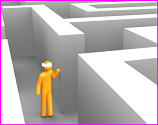 In this activity, students working in pairs learn basic computer programming and software engineering concepts by building an obstacle course, then steering a blindfolded friend through it by using a series of commands. They re-run the maze to improve on their “program.”
In this activity, students working in pairs learn basic computer programming and software engineering concepts by building an obstacle course, then steering a blindfolded friend through it by using a series of commands. They re-run the maze to improve on their “program.”
Read More
Filed under: Class Activities, Grades 6-8, Grades 6-8, Grades K-5, Grades K-5, Lesson Plans | Comments Off on Program a Friend
Tags: Class Activities, coding, Computer Programming, Grades 6-8, Grades K-5, Lesson Plans, Mathematics, Robotics, software engineering, Technology
Posted on August 29th, 2013 by Mary Lord
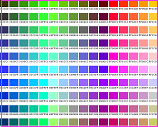 Computer science has the highest pay for new college graduates, twice the national average job growth of more than double the national average, and applications that stretch from rock music to medicine. Yet 9 in 10 schools don’t teach programming. Code.org hopes to change that with a host of free resources to get kids as young as four creating websites and apps.
Computer science has the highest pay for new college graduates, twice the national average job growth of more than double the national average, and applications that stretch from rock music to medicine. Yet 9 in 10 schools don’t teach programming. Code.org hopes to change that with a host of free resources to get kids as young as four creating websites and apps.
The answer is computer programming, and advocates from Microsoft founder Bill Gates to former president Bill Clinton are pushing to include it in the K-12 curriculum.
Far from being complicated algorithms only a geek could master, code writing can be learned by just about anyone — even four-year-olds. Code.org has compiled a host of websites, courses, and other free resources to help students hone programming skills from building websites to creating phone apps. There also are tips for using code writing and programming projects and activities in math or science classes to cover content standards.
Read More
Filed under: For Teachers, Grades 6-8, Grades 6-8, Grades 9-12, Grades 9-12, Grades K-5, Grades K-5, K-12 Outreach Programs, Lesson Plans, Special Features, Web Resources | Comments Off on Code Calling
Tags: code writing, code.org, Computer Programming, Computer Science, Curriculum, Internet Resources, Lesson Plan, Resources for Teachers, STEM education, Teacher Resources, Technology for Learning, Website
Posted on June 19th, 2013 by Mary Lord
 In this activity, teams of students in grades K-12 learn about the history and engineering behind Ferris wheels by constructing a working model using pasta, glue, and teabags.
In this activity, teams of students in grades K-12 learn about the history and engineering behind Ferris wheels by constructing a working model using pasta, glue, and teabags.
Read More
Filed under: Class Activities, Grades 6-8, Grades 6-8, Grades 9-12, Grades 9-12, Grades K-5, Grades K-5, Lesson Plans | Comments Off on Build a Big Wheel
Tags: Class Activities, Ferris wheel, Grades 6-8, Grades 9-12, Grades K-5, London eye, motions and forces, Physics
Posted on May 25th, 2013 by Mary Lord
 In this activity, students in grades 6 to 8 learn about the engineering design process and the physical principles of buoyancy by working together to build a boat out of straws and plastic wrap that can hold 25 pennies for at least 10 seconds before sinking.
In this activity, students in grades 6 to 8 learn about the engineering design process and the physical principles of buoyancy by working together to build a boat out of straws and plastic wrap that can hold 25 pennies for at least 10 seconds before sinking.
Read More
Filed under: Class Activities, Grades 6-8, Grades 6-8, Grades K-5, Grades K-5, Lesson Plans | Comments Off on Watercraft
Tags: boats, buoyancy, flotation, forces, Marine engineering, ocean engineering, sailboat
Posted on September 17th, 2012 by Mary Lord
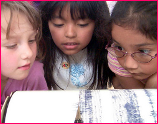 Students in grades 3 – 12 explore how the development of seismographs has helped save lives worldwide by working in teams to design their own seismograph from everyday items, test its ability to record a simulated classroom earthquake, evaluate their results, and report to the class.
Students in grades 3 – 12 explore how the development of seismographs has helped save lives worldwide by working in teams to design their own seismograph from everyday items, test its ability to record a simulated classroom earthquake, evaluate their results, and report to the class.
Read More
Filed under: Grades 6-8, Grades 9-12, Grades K-5, Lesson Plans | Comments Off on Lesson: Shake It Up with Seismographs
Tags: earthquake, Earthquake materials, Seismology
Posted on January 18th, 2012 by Mary Lord
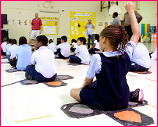 In this lesson, pairs of students in grades 4 to 7 will learn about the engineering design process and electrical circuits by building a dance pad that sounds a buzzer or flashes a light when stepped on.
In this lesson, pairs of students in grades 4 to 7 will learn about the engineering design process and electrical circuits by building a dance pad that sounds a buzzer or flashes a light when stepped on.
Read More
Filed under: Class Activities, Grades 6-8, Grades 6-8, Grades K-5, Grades K-5, Lesson Plans | 2 Comments »
Tags: circuits, Design Squad, Design Squad Nation, Electrical, Electrical Engineering, Engineering Design, Engineering Design Process, Fun & Games, games
Posted on December 11th, 2011 by Mary Lord
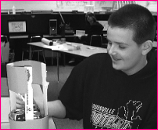 In this activity, teams of kids in grades 4-7 follow the engineering design process to invent a holder for six cans that’s animal-safe, sturdy, convenient, and easy to carry. They learn why discarded plastic rings can be a problem for wildlife and brainstorm animal-friendly ways to package six cans. They then build, test, and redesign their system and discuss what happened.
In this activity, teams of kids in grades 4-7 follow the engineering design process to invent a holder for six cans that’s animal-safe, sturdy, convenient, and easy to carry. They learn why discarded plastic rings can be a problem for wildlife and brainstorm animal-friendly ways to package six cans. They then build, test, and redesign their system and discuss what happened.
Read More
Filed under: Class Activities, Grades 6-8, Grades 6-8, Grades K-5, Grades K-5, Lesson Plans | 1 Comment »
Tags: Class Activities, design process, Design Squad Nation, Environmental Engineering, environmental protection, Grades 6-8, Grades K-5, plastic rings, six pack, wildlife
Posted on December 4th, 2011 by Mary Lord
 In this activity, students in grades 4 – 12 will do math like a computer. They will learn the basics of binary number systems by writing and then counting on their hands, and use their knowledge to decode numbers and letters.
In this activity, students in grades 4 – 12 will do math like a computer. They will learn the basics of binary number systems by writing and then counting on their hands, and use their knowledge to decode numbers and letters.
Read More
Filed under: Class Activities, Grades 6-8, Grades 6-8, Grades 9-12, Grades 9-12, Grades K-5, Grades K-5, Lesson Plans | Comments Off on Lesson: Bits & Binary
Tags: binary number systems, Class Activities, code, Computer Engineering, Computer Programming, Computer Science, digital, Grades 6-8, Grades 9-12, Grades K-5, Lesson Plan
Posted on November 13th, 2011 by Mary Lord
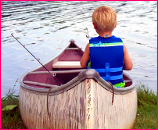 In this activity, teams of students in grades 3-12 explore the engineering design process by building model canoes from everyday materials and testing their design in a basin. The canoes must be able to float for three minutes and, for older students, support a load. Students then evaluate the effectiveness of their canoes and those of other teams, and present their findings to the class.
In this activity, teams of students in grades 3-12 explore the engineering design process by building model canoes from everyday materials and testing their design in a basin. The canoes must be able to float for three minutes and, for older students, support a load. Students then evaluate the effectiveness of their canoes and those of other teams, and present their findings to the class.
Read More
Filed under: Class Activities, Grades 6-8, Grades 6-8, Grades 9-12, Grades 9-12, Grades K-5, Grades K-5, Lesson Plans | Comments Off on Lesson: Can-Do Canoe
Tags: boat, canoe, Class Activities, Design, Lesson Plan, Lesson Plans, Native American
 In this activity, students working in pairs learn basic computer programming and software engineering concepts by building an obstacle course, then steering a blindfolded friend through it by using a series of commands. They re-run the maze to improve on their “program.”
In this activity, students working in pairs learn basic computer programming and software engineering concepts by building an obstacle course, then steering a blindfolded friend through it by using a series of commands. They re-run the maze to improve on their “program.”








 Computer science has the highest pay for new college graduates, twice the national average job growth of more than double the national average, and applications that stretch from rock music to medicine. Yet 9 in 10 schools don’t teach programming. Code.org hopes to change that with a host of free resources to get kids as young as four creating websites and apps.
Computer science has the highest pay for new college graduates, twice the national average job growth of more than double the national average, and applications that stretch from rock music to medicine. Yet 9 in 10 schools don’t teach programming. Code.org hopes to change that with a host of free resources to get kids as young as four creating websites and apps. In this activity, teams of students in grades K-12 learn about the history and engineering behind Ferris wheels by constructing a working model using pasta, glue, and teabags.
In this activity, teams of students in grades K-12 learn about the history and engineering behind Ferris wheels by constructing a working model using pasta, glue, and teabags. In this activity, students in grades 6 to 8 learn about the engineering design process and the physical principles of buoyancy by working together to build a boat out of straws and plastic wrap that can hold 25 pennies for at least 10 seconds before sinking.
In this activity, students in grades 6 to 8 learn about the engineering design process and the physical principles of buoyancy by working together to build a boat out of straws and plastic wrap that can hold 25 pennies for at least 10 seconds before sinking. Students in grades 3 – 12 explore how the development of seismographs has helped save lives worldwide by working in teams to design their own seismograph from everyday items, test its ability to record a simulated classroom earthquake, evaluate their results, and report to the class.
Students in grades 3 – 12 explore how the development of seismographs has helped save lives worldwide by working in teams to design their own seismograph from everyday items, test its ability to record a simulated classroom earthquake, evaluate their results, and report to the class. In this lesson, pairs of students in grades 4 to 7 will learn about the engineering design process and electrical circuits by building a dance pad that sounds a buzzer or flashes a light when stepped on.
In this lesson, pairs of students in grades 4 to 7 will learn about the engineering design process and electrical circuits by building a dance pad that sounds a buzzer or flashes a light when stepped on. In this activity, teams of kids in grades 4-7 follow the engineering design process to invent a holder for six cans that’s animal-safe, sturdy, convenient, and easy to carry. They learn why discarded plastic rings can be a problem for wildlife and brainstorm animal-friendly ways to package six cans. They then build, test, and redesign their system and discuss what happened.
In this activity, teams of kids in grades 4-7 follow the engineering design process to invent a holder for six cans that’s animal-safe, sturdy, convenient, and easy to carry. They learn why discarded plastic rings can be a problem for wildlife and brainstorm animal-friendly ways to package six cans. They then build, test, and redesign their system and discuss what happened. In this activity, students in grades 4 – 12 will do math like a computer. They will learn the basics of binary number systems by writing and then counting on their hands, and use their knowledge to decode numbers and letters.
In this activity, students in grades 4 – 12 will do math like a computer. They will learn the basics of binary number systems by writing and then counting on their hands, and use their knowledge to decode numbers and letters. In this activity, teams of students in grades 3-12 explore the engineering design process by building model canoes from everyday materials and testing their design in a basin. The canoes must be able to float for three minutes and, for older students, support a load. Students then evaluate the effectiveness of their canoes and those of other teams, and present their findings to the class.
In this activity, teams of students in grades 3-12 explore the engineering design process by building model canoes from everyday materials and testing their design in a basin. The canoes must be able to float for three minutes and, for older students, support a load. Students then evaluate the effectiveness of their canoes and those of other teams, and present their findings to the class.